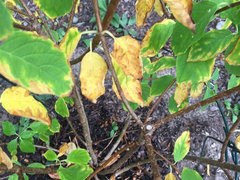How Hydrangea Leaves Turning Yellow can Save You Time, Stress, and Money.
Wiki Article
All About Hydrangea Leaves Turning Yellow
Table of ContentsSome Known Details About Hydrangea Leaves Turning Yellow 9 Simple Techniques For Hydrangea Leaves Turning YellowNot known Factual Statements About Hydrangea Leaves Turning Yellow More About Hydrangea Leaves Turning Yellow
Hydrangea plants are recognized for their gorgeous blossoms, yet occasionally their fallen leaves can transform yellow. This is usually a sign that something is wrong and the plant requires your assistance. There are several feasible reasons of yellow fallen leaves on Hydrangeas, and thankfully the majority of them are simple to take care of. Right here we'll cover the most usual sources of Hydrangea leaves transforming yellow and how to fix them.However, Hydrangea leaves transforming yellow can be a cause for issue. There are numerous reasons Hydrangea leaves turn yellow, and a lot of them are easy to fix. Let's consider the most typical reasons that Hydrangea leaves turn yellow and exactly how to fix them. Hydrangea leaves typically turn yellow when the plant is overwatered.
When the roots of a plant are submerged in water for long durations, they start to suffocate and rot. This procedure cuts off the origins' oxygen supply, causing the leaves to turn yellow and ultimately pass away. Overwatering can likewise cause various other problems such as leaf decline, root damage, and fungal development.
If you think your Hydrangea is overwatered, the very best service is to allow the dirt dry totally prior to watering once more. It's also a good idea to examine the drainage of your pot or yard bed and see to it that water is not merging around the plant's roots. Hydrangea plants need well-drained soil to thrive.
A Biased View of Hydrangea Leaves Turning Yellow
You should additionally make sure that you are not watering your Hydrangea frequently. Watering once a week ought to suffice, and much more often if the weather condition is hot and dry. Hydrangea leaves can additionally turn yellow if the plant is not obtaining sufficient water. This occurs when the plant does not receive adequate water, and the dirt begins to dry out.
This is known as "fertilizer shed," It happens when the plant's roots are exposed to too much fertilizer. Various other signs of plant food burn include brown or like this yellow fallen Source leaves, wilting, and stunted growth.
This will assist eliminate any type of excess fertilizer from the roots of the plant. It's likewise a great concept to reduce the amount of plant food you are utilizing.
The Hydrangea Leaves Turning Yellow Diaries

If your Hydrangea is infested with bugs, treating the plant with neem or gardening oil is the best service. It's likewise good to remove any damaged leaves from the plant (Hydrangea Leaves Turning Yellow).
To prevent spreading out the condition, make sure to disinfect your scissors before cutting any leaves off. Hydrangea leaves can likewise transform yellow if the temperature stresses the plant. This normally occurs when the plant is exposed to severe cool or heat. The leaves of the plant will certainly transform yellow and start to leave.
If the temperature stresses your Hydrangea, you require to move the plant to an area where it will be shielded from the extreme cool or warmth. You can also attempt to offer the plant with some partial shade if exposed to guide sunlight. You can likewise attempt adding compost around the plant base to help regulate the temperature.
Examine This Report on Hydrangea Leaves Turning Yellow
When the plant's origins are submerged in water for too long, they begin to rot. One of the most usual origin rot symptoms is yellowing fallen leaves, as the fungi protects against the origins from soaking up nutrients from the dirt.Various other indications of root rot consist of stunted development, wilting, and leaf decline. Check the origins of your Hydrangea if it has origin rot. If they are black or brownish, then they are most likely rotten. If some healthy and balanced origins are left, you can try to save the plant by replanting it in a brand-new pot with fresh soil.
Water the plant carefully, ensuring not to overwater it. If your Hydrangea is greatly influenced by root rot, starting with a new plant is best. All-natural causes can additionally create yellow learn this here now hydrangea leaves. One of the most usual reason is the plant's age. As Hydrangeas age, their leaves will gradually transform yellow and brown before dropping off the plant.
You can assist the plant by ensuring it is obtaining enough water and nutrients. One possibility is that the plant is not getting sufficient water.
Report this wiki page